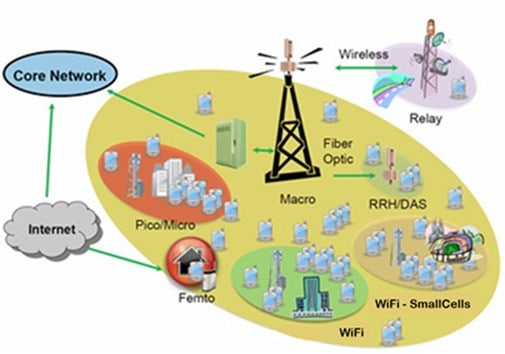Heterogeneous Network is a network that uses multiple network architectures and operating systems.
What is Heterogeneous Network?
A network that uses multiple network architectures and operating systems. An example of a heterogeneous network at the hardware level is a combination of Ethernet and Token Ring local area networks (LANs) connected with a Fiber Distributed Data Interface (FDDI) backbone.

An example at the network operating system (NOS) level is a server room in which some machines are running Microsoft Windows NT, others are running UNIX, and still, others are running Novell NetWare. An example at the application level is a messaging system that includes Microsoft Exchange Server, Novell GroupWise, UNIX Sendmail, and IBM PROFS mail systems.
Heterogeneous networks are generally more complex to administer than homogeneous networks. Most networks are heterogeneous because they evolve over a period of time. Most startup companies cannot afford to buy a completely homogeneous, state-of-the-art network platform, and even if they could, it would soon become out of date.
One advantage of deliberately maintaining a heterogeneous network is that customers can use any product they choose instead of being locked into a single vendor’s system. Networking and operating system choices can be made on a “best-served” basis instead of an “only buy from us” approach.
Semantic of “Heterogeneous Network” in Communications
From a semantical point of view, it is very important to note that the Heterogeneous Network terminology may have different connotations in wireless telecommunications. For instance, it may refer to the paradigm of seamless and ubiquitous interoperability between various multi-coverage protocols (a.k.a. HetNet).
Otherwise, it may refer to the non-uniform spatial distribution of users or wireless nodes (a.k.a. Spatial Inhomogeneity). Therefore, using the term “heterogeneous network” without putting it into perspective may result in a source of confusion in scientific literature and during the peer-review cycle. In fact, the confusion may further be aggravated, especially in light of the fact that the “HetNet” paradigm may also be researched from a “geometrical” angle.